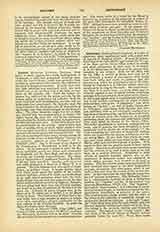

Leander of Seville, Saint, bishop of that city, b. at Carthage about 534, of a Roman family established in that city; d. at Seville, March 13, 600 or 601. Some historians claim that his father Severian was duke or governor of Carthage, but St. Isidore simply states that he was a citizen of that city. The family emigrated from Carthage about 554 and went to Seville. The eminent worth of the children of Severian would seem to indicate that they were reared in distinguished surroundings. Severian had three sons, Leander, Isidore, and Fulgentius, and one daughter, Florentina. St. Leander and St. Isidore both became bishops of Seville; St. Fulgentius, Bishop of Carthagena, and St. Florentina, a nun, who directed forty convents and one thousand nuns. It has been also believed, but wrongly, that Theodosia, another daughter of Severian, became the wife of the Visigothic king, Leovigild. Leander became at first a Benedictine monk, and then in 579 Bishop of Seville. In the meantime he founded a celebrated school, which soon became a center of learning and orthodoxy. He assisted the Princess Ingunthis to convert her husband Hermenegild, the eldest son of Leovigild, and defended the convert against his father’s cruel reprisals. In endeavoring to save his country from Arianism, Leander showed himself an orthodox Christian and a far-sighted patriot. Exiled by Leovigild, he withdrew to Byzantium from 579 to 582. It is possible, but not proved, that he sought to rouse the Emperor Tiberius to take up arms against the Arian king: in any case the attempt was without result. He profited, however, by his stay at Byzantium to compose important works against Arianism, and there became acquainted with the future Gregory the Great, then legate of Pelagius II at the Byzantine court. A close friendship thenceforth united the two men, and the correspondence of St. Gregory with St. Leander remains one of the latter’s great titles to honor. It is not known exactly when Leander returned from exile. Leovigild put to death his son Hermenegild in 585, and himself died in 589.
In this decisive hour for the future of Spain, Leander did most to ensure the religious unity, the fervent faith, and the broad culture on which was based its later greatness. He had a share in the conversion of Reccared, and never ceased to exercise over him a deep and beneficial influence. At the Third Council of Toledo, where Visigothic Spain abjured Arianism, Leander delivered the closing sermon. On his return from this council, Leander convened an important synod in his metropolitan city of Seville (Conc. Hisp., I), and never afterwards ceased his efforts to consolidate the work, in which his brother and successor St. Isidore was to follow him. Leander received the pallium in August, 599. There remain unfortunately of this writer, superior to his brother Isidore, only two works: “De institutione virginum et contemptu mundi”, a monastic rule composed for his sister, and “Homilia de triumpho ecclesiae ob conversionem Gothorum” (P.L., LXXII). St. Isidore wrote of his brother: “This man of suave eloquence and eminent talent shone as brightly by his virtues as by his doctrine. By his faith and zeal the Gothic people have been converted from Arianism to the Catholic faith” (De script. eccles., xxviii).
PIERRE SHAH

